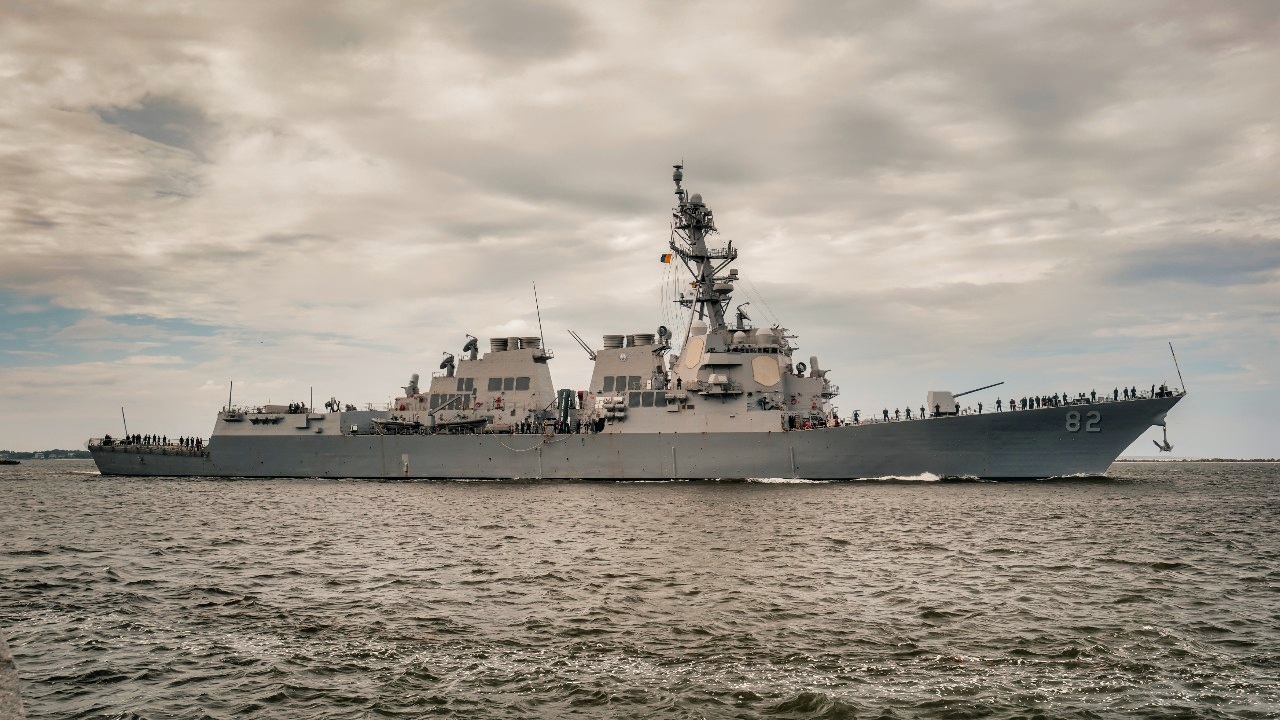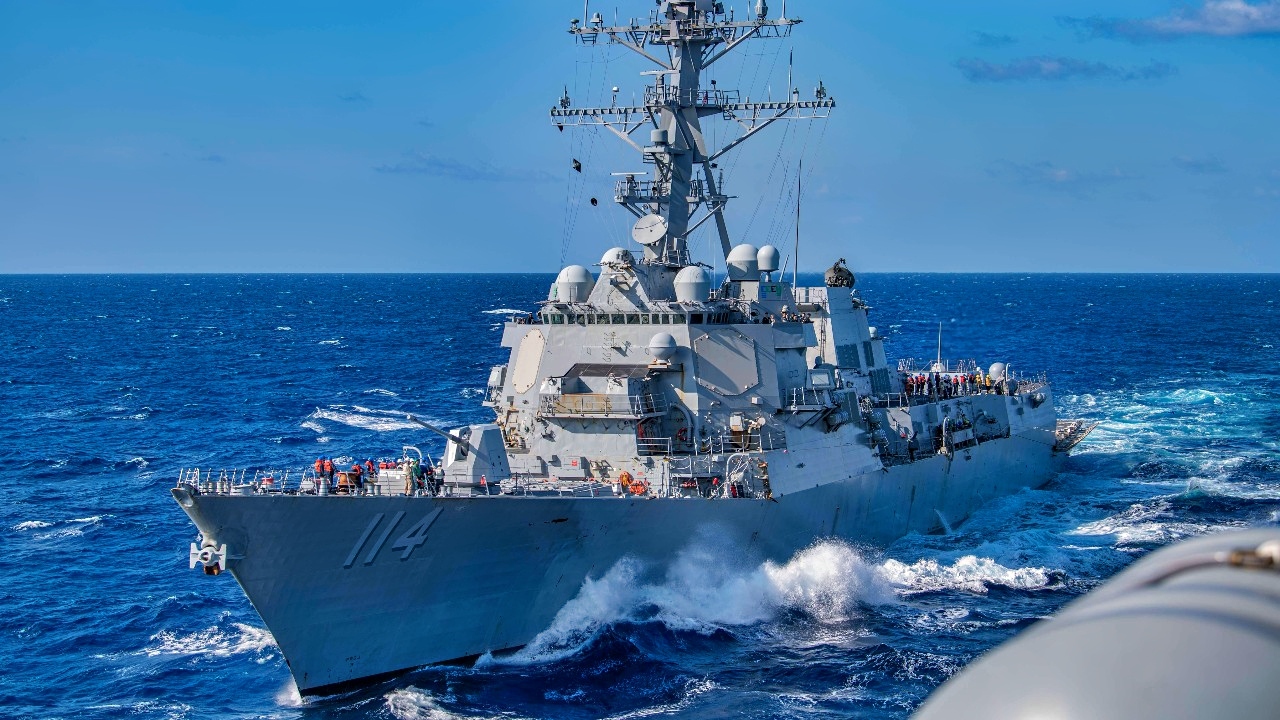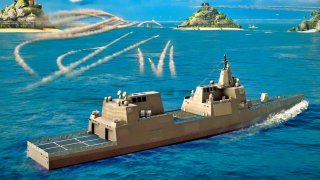The U.S. Navy's New DDG(X) Destroyer Can Be Explained in 2 Words
The U.S. Navy has decided to extend the service life of 12 Arleigh Burke-class destroyers by up to five years to prevent a capability gap before the arrival of the DDG(X) class.
Never Happening?: The U.S. Navy has decided to extend the service life of 12 Arleigh Burke-class destroyers by up to five years to prevent a capability gap before the arrival of the DDG(X) class.

-This choice underscores challenges in timely fleet modernization as the Navy contends with past program delays like the Littoral Combat Ship and Zumwalt-class destroyers.
-Although the DDG(X) promises advanced capabilities like directed energy weapons and increased missile payloads, critics argue the Navy needs reliable, immediate capabilities to counter current threats.
-Congress may need to reassess the viability of the costly DDG(X) in favor of enhancing existing assets.
Will the DDG(X) Be Another Costly Navy Misstep?
Just when the Navy thought it might get a break, America’s maritime military service was forced to announce that “twelve Arleigh Burke-class guided-missile destroyers will remain in the fleet past their initial service lives.” According to USNI News, “The life extensions for the Flight I destroyers range from one to five years, depending on the ship.”
The Navy is patting themselves on the backs because this will prevent a capabilities gap from forming between when the Arleigh Burke-class destroyers were supposed to be retired and when newer warships, like the DDG(X) are supposed to come online.

In fact, the decision by the Navy to extend these older guided-missile destroyers was a quiet admission that the Navy’s best laid (and massively expensive) plans are not turning out as they assured the American people and their elected representatives in Congress that it would turn out.
This comes on the heels of the travesties that were the Littoral Combat Ship (LCS) and Zumwalt-class destroyer programs, as well as failing programs, like the Constellation-class frigate—to say nothing of the inability for America’s ailing shipyards to keep up with the demand for more warships in general.
The Specs On This U.S. Navy Destroyer
DDG(X) destroyers are specifically designed to replace the Navy’s aging Ticonderoga-class Aegis destroyers by Fiscal Year 2032. The Navy claims that the DDG(X) destroyers will bring some of the most advanced capabilities ever seen. These advances include directed energy weapons (DEW) and larger missile payloads. Yet, these boats, like the rest of the Navy’s surface fleet, does little to reliably address the threat that China’s (and others) anti-access/area-denial (A2/AD) defenses pose to the US Navy’s surface warfare fleet.
The DDG(X) is slated to possess “96 standard Vertical Launch Systems (VLS) cells, with an ability to incorporate 12 larger missile launch cells, in place of 32 of the 96 VLS cells. It is also to include two 21-cell Rolling Airframe Missile (RAM) launchers, and possibly also an ability to be built with an additional mid-body hull section, called the Destroyer Payload Module, that would provide additional capacity,” as a report from the Congressional Research Service (CRS) outlines.

DDG(X): Never Going to Happen
Talk of all these advanced systems and capabilities is wonderful for getting Congress to give you gobs of money. It’s not so great in actually building the things. The United States needs its Navy to be stronger and operating more robustly right now, not in the 2030s.
The threat that America faces today from near-peer rivals—or even terror groups like the Yemen-based Houthi Rebels—is now. It is not a decade from now.
The Navy should have extended the lifespans of those Flight I Arleigh Burke-class destroyers years ago. In fact, they should stop talking altogether about cannibalizing the existing fleet to pay for their obsessive quest for a wünderwaffe.
The DDG(X), like so many other boondoggles the Navy has attempted to build, is a giant waste of tax dollars that will pull resources away from systems that can reliably defend US national interests abroad. Someone in Congress should stop this madness before it gets out of control, as the LCS and Zumwalt-class did.
Author Experience and Expertise: Brandon J. Weichert
Brandon J. Weichert, a National Interest national security analyst, is a former Congressional staffer and geopolitical analyst who is a contributor at The Washington Times, the Asia Times, and The-Pipeline. He is the author of Winning Space: How America Remains a Superpower, Biohacked: China’s Race to Control Life, and The Shadow War: Iran’s Quest for Supremacy. His next book, A Disaster of Our Own Making: How the West Lost Ukraine, is out now from Encounter Books. Weichert can be followed via Twitter @WeTheBrandon.
All images are Creative Commons or Shutterstock.
From the Vault
Russia Freaked Out: Why the U.S. Navy 'Unretired' the Iowa-Class Battleships
Battleship vs. Battlecruiser: Iowa-Class vs. Russia's Kirov-Class (Who Wins?)


